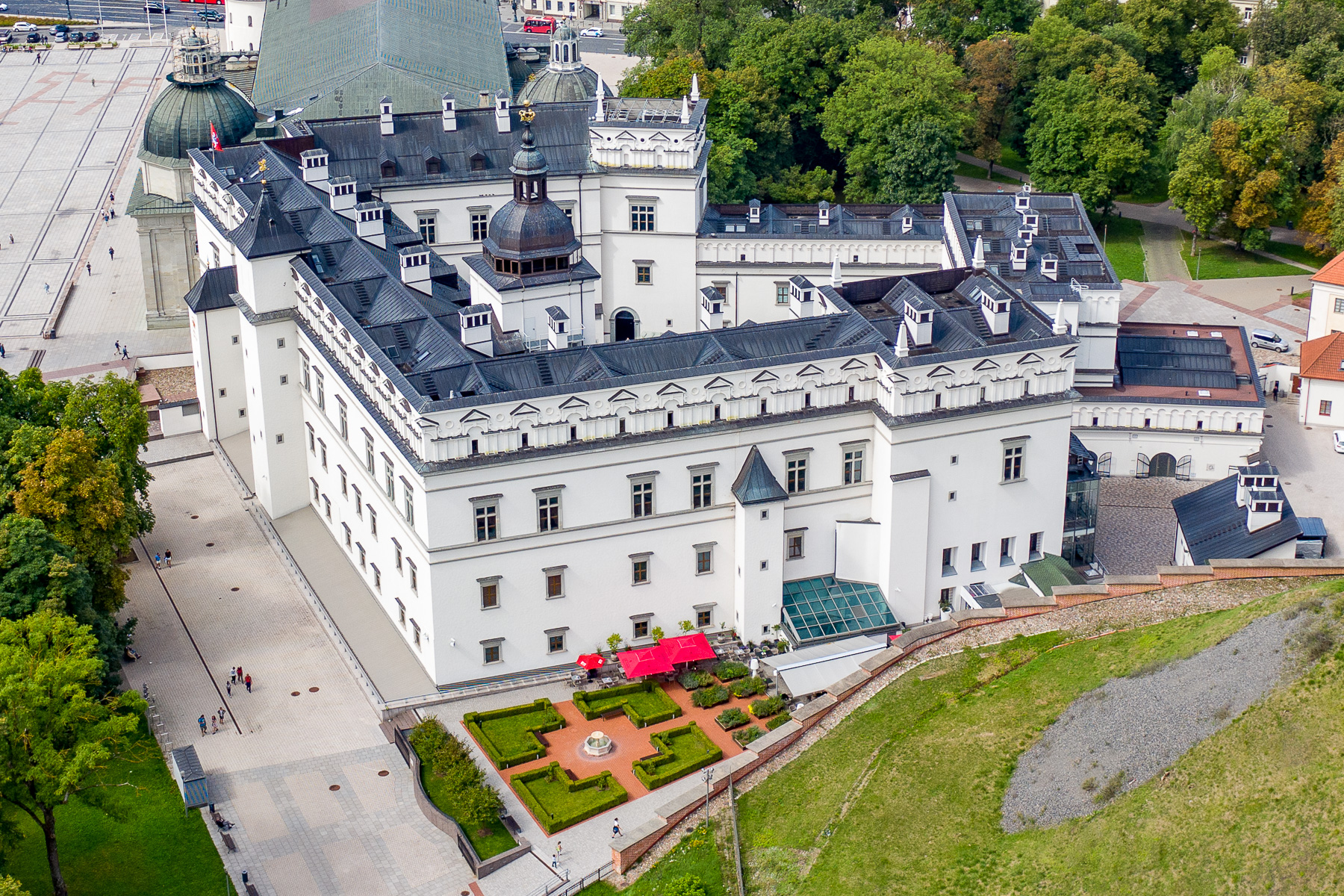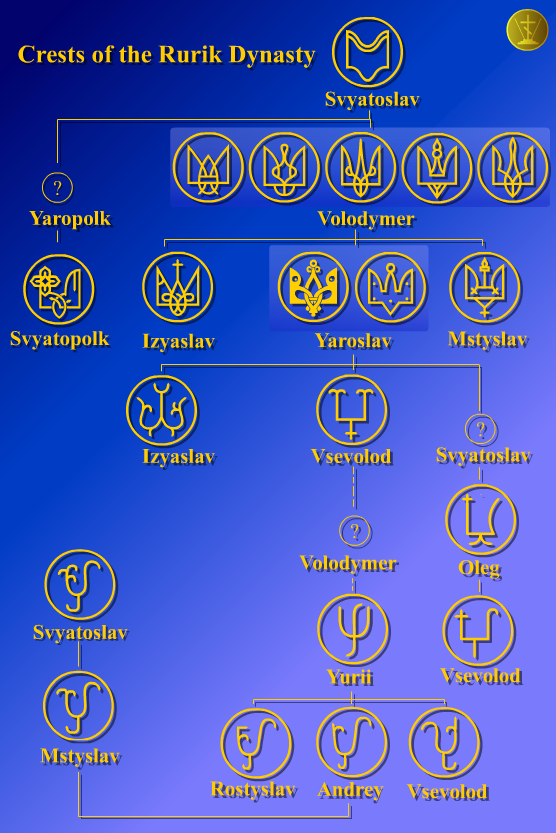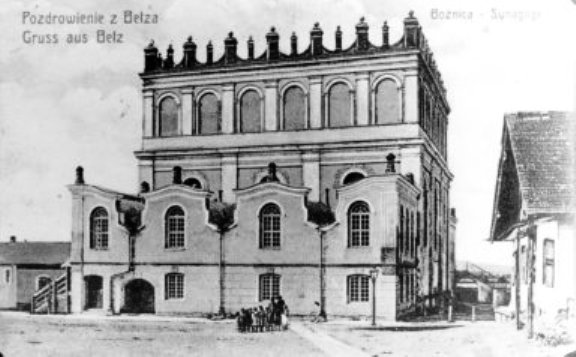|
҆varnas
Shvarn or Shvarno (; ; ; ‚Äď ) was Grand Duke of Lithuania from 1267 to 1269. He was also the prince of Kholm from 1264 to 1269. An influential leader, he became involved in internal struggles of power within the neighboring Grand Duchy of Lithuania. Name Little is known of Shvarn and even his name is not entirely certain. The original documents relating to this ruler are scarce and mention him under a variety of names. For instance the first edition of Lithuanian Annals mentions him as Shkvarno, but the following editions use the names of ''Skirmont'' and ''Skirmunt'', possibly a Ruthenisation of Lithuanian name ''Skirmantas''. Contemporary sources also mention his Christian name of ''Ioann'' (''–Ü–ĺ–į–Ĺ–Ĺ''), that is either John or George. In modern times the ruler is known by a variety of names in various historiographies, including Lithuanian ''҆varnas'', Ukrainian –®–≤–į—Ä–Ĺ–ĺ –Ē–į–Ĺ–ł–Ľ–ĺ–≤–ł—á, Russian and Belarusian –®–≤–į—Ä–Ĺ, and Polish ''Szwarno DaniŇāowicz''. ... [...More Info...] [...Related Items...] OR: [Wikipedia] [Google] [Baidu] |
Grand Duke Of Lithuania
This is a list of Lithuanian monarchs who ruled Lithuania from its inception until the fall of the Grand Duchy of Lithuania in 1795. The Lithuanian monarch bore the title of Grand duke, Grand Duke, with the exception of Mindaugas, who was crowned king in 1253. Other Lithuanian rulers, such as Vytautas the Great, also attempted to secure a royal coronation, but these efforts were unsuccessful.Nadveckńó, Ineta (6 July 2019Trys Lietuvos karaliai: vienas tikras, vienas nelabai ir vienas beveik''Lithuanian National Radio and Television, LRT''. Until 1569, the Lithuanian monarchy was hereditary. In 1386, Grand Duke Jogaila was elected King of Poland. From that point onward, with some interruptions, the two states were united in a personal union, sharing a common ruler until 1569, when they were formally merged by the Union of Lublin to form the Polish‚ÄďLithuanian Commonwealth. The monarch of this new state was elected in a free election by the entire nobility. From the Christianizat ... [...More Info...] [...Related Items...] OR: [Wikipedia] [Google] [Baidu] |
List Of Heads Of State Of Lithuania
The article is a list of heads of state of Lithuania over historical Lithuanian state. The timeline includes all heads of state of Lithuania as a sovereign entity, legitimately part of a greater sovereign entity, a client state, or a Republics of the Soviet Union, constituent republic subject to an outside authority. Currently, the head of state is the President of Lithuania. During the inaugurations of List of Lithuanian monarchs, Lithuanian monarchs until 1569, the Gediminas' Cap was placed on the monarch's heads by the Bishop of Vilnius in Vilnius Cathedral. Kingdom of Lithuania (1251‚Äď1263) Title: King of Lithuania (). Dates are approximate because of scant written sources. House of Mindaugas (1253‚Äď1263) , King 1236‚Äď1253 ''(as Grand Duke)'' 1253‚Äď1263 ''(as King)'', , , , Son of mythological Ringaudas , , Nomen nescio, NN, sister of Morta 2 children Morta (queen), Morta 2 children , , 1263 Aglona Assassinated by Treniota and Daumantas Aged about 60 ... [...More Info...] [...Related Items...] OR: [Wikipedia] [Google] [Baidu] |
Daniel Of Galicia
Daniel Romanovich (1201‚Äď1264) was Prince of Galicia (1205‚Äď1207; 1211‚Äď1212; 1230‚Äď1232; 1233‚Äď1234; 1238‚Äď1264), Prince of Volhynia, Volhynia (1205‚Äď1208; 1215‚Äď1238), Grand Prince of Kiev (1240), and King of Ruthenia (1253‚Äď1264). Biography Early life and reign Daniel's father, Roman the Great, Roman Mstislavich, united the principalities of Principality of Halych, Galicia and Principality of Volhynia, Volhynia in 1199. After his death in 1205, the boyars of Galicia forced the four-year-old Daniel into exile with his mother Anna-Euphrosyne and brother Vasylko Romanovich. After the boyars proclaimed one of their own as prince, the Poles and Hungarians invaded the principality, ostensibly to support the claims of young Daniel and Vasylko, and divided it between themselves. In 1219, Danylo renounced his claims to Galicia (eastern Europe), Galicia in favor of his father-in-law, Mstislav the Bold. In 1221, Daniel re-established his rule over Volhynia, where the boyars a ... [...More Info...] [...Related Items...] OR: [Wikipedia] [Google] [Baidu] |
Grand Duchy Of Lithuania
The Grand Duchy of Lithuania was a sovereign state in northeastern Europe that existed from the 13th century, succeeding the Kingdom of Lithuania, to the late 18th century, when the territory was suppressed during the 1795 Partitions of Poland, partitions of Poland‚ÄďLithuania. The state was founded by Lithuanians (tribe), Lithuanians, who were at the time a Lithuanian mythology, polytheistic nation of several united Baltic tribes from AukŇ°taitija. By 1440 the grand duchy had become the largest European state, controlling an area from the Baltic Sea in the north to the Black Sea in the south. The grand duchy expanded to include large portions of the former Kievan Rus' and other neighbouring states, including what is now Belarus, Lithuania, most of Ukraine as well as parts of Latvia, Moldova, Poland and Russia. At its greatest extent, in the 15th century, it was the largest state in Europe. It was a multinational state, multi-ethnic and multiconfessionalism, multiconfessional sta ... [...More Info...] [...Related Items...] OR: [Wikipedia] [Google] [Baidu] |
Rurik Dynasty
The Rurik dynasty, also known as the Rurikid or Riurikid dynasty, as well as simply Rurikids or Riurikids, was a noble lineage allegedly founded by the Varangian prince Rurik, who, according to tradition, established himself at Novgorod in the year 862. The Rurikids were the ruling dynasty of Kievan Rus' and its principalities following its disintegration. The ''Romanovichi'' ruled the southwestern territories, which were unified by Roman the Great and his son Daniel, who was in 1253 crowned by Pope Innocent IV as the king of Ruthenia. Galicia‚ÄďVolhynia was eventually annexed by Poland and Lithuania. The northern and northeastern territories were unified by the ''Daniilovichi'' of Moscow; by the 15th century, Ivan III threw off the control of the Golden Horde and assumed the title of sovereign of all Russia. Ivan IV was crowned as the tsar of all Russia, where the Rurik line ruled until 1598, following which they were eventually succeeded by the House of Romanov. As a ... [...More Info...] [...Related Items...] OR: [Wikipedia] [Google] [Baidu] |
Kingdom Of Galicia‚ÄďVolhynia
The Principality or, from 1253, Kingdom of Galicia‚ÄďVolhynia, also known as the Kingdom of Ruthenia, Kingdom of Rus', or Kingdom of Russia, also Halych‚ÄďVolhynian Kingdom was a medieval state in Eastern Europe which existed from 1199 to 1349. Its territory was predominantly located in modern-day Ukraine, with parts in Belarus, Poland, Moldova, and Lithuania. Along with Novgorod Republic, Novgorod and Vladimir-Suzdal, it was one of the three most important powers to emerge from the collapse of Kievan Rus'. Roman the Great united the principalities of Principality of Galicia, Galicia and Principality of Volhynia, Volhynia at the turn of the 13th century. Following the destruction wreaked by the Mongol invasion of Kievan Rus' (1239‚Äď1241), Prince Daniel of Galicia and the other princes of Rus' pledged allegiance to Batu Khan of the Golden Horde in 1246. The Polish conquest of the kingdom in 1349 led to it being fully absorbed by Catholic Poland.Michael B. Zdan ‚Äď The Dependence o ... [...More Info...] [...Related Items...] OR: [Wikipedia] [Google] [Baidu] |
Halicz
Halych (, ; ; ; ; , ''Halitsch'' or ''Galitsch''; ) is a historic city on the Dniester River in western Ukraine. The city gave its name to the Principality of Halych, the historic province of Galicia (Halychyna), and the Kingdom of Galicia‚ÄďVolhynia, of which it was the capital until the early 14th century, when the seat of the local rulers moved to Lviv. Nowadays, Halych is a small town located only on one part of the territory of the former Galician capital, although it has preserved its name. It belongs to Ivano-Frankivsk Raion (district) of Ivano-Frankivsk Oblast (region). It hosts the administration of Halych urban hromada, one of the hromadas of Ukraine. Halych lies north of the oblast capital, Ivano-Frankivsk. Population: Name The city's name, though spelled identically in modern East Slavic languages (–ď–į–Ľ–ł—á), is pronounced ''Halych'' in Ukrainian and ''Galich'' in Russian. The Russian transliteration should not be confused with the Russian town of Galich. ... [...More Info...] [...Related Items...] OR: [Wikipedia] [Google] [Baidu] |
Bug River
The Bug or Western Bug is a major river in Central Europe that flows through Belarus (border), Poland, and Ukraine, with a total length of .Statistical Yearbook of the Republic of Poland 2017 Statistics Poland, p. 85-86 A of the Narew, the Bug forms part of the |
BeŇāz
Belz (, ; ; ) is a small city in Lviv Oblast, western Ukraine, located near the Poland‚ÄďUkraine border, border with Poland between the Solokiya River (a tributary of the Bug River) and the Richytsia stream. Belz hosts the administration of Belz urban hromada, one of the hromadas of Ukraine. Its population is approximately Origin of name There are a few theories as to the origin of the name: * Celtic languages, Celtic ‚Äď ''belz'' (water) or ''pelz'' (stream), * German language, German ‚Äď ' (fur, furry) * Old Slavic language, Old Slavic and the Boyko dialect ‚Äď ¬ę–Ī–Ķ–Ľ–∑¬Ľ or ¬ę–Ī–Ķ–≤–∑¬Ľ (muddy place), * Old East Slavic ‚Äď ¬ę–Ī—ä–Ľ–ł–∑—ƬĽ (white place, a glade in the midst of dark woods). The name occurs only in two other places, the first being a Celtic area in antiquity, and the second one being derived from its Romanian name: * ''Belz, Morbihan, Belz'' (department Morbihan), Brittany, France * ''BńÉl»õi'' (/''Beljcy'', also known in Yiddish as ''Beltz''), Moldova (Be ... [...More Info...] [...Related Items...] OR: [Wikipedia] [Google] [Baidu] |
Red Ruthenia
Red Ruthenia, also called Red Rus or Red Russia, is a term used since the Middle Ages for the south-western principalities of Kievan Rus', namely the Principality of Peremyshl and the Duchy of Belz, Principality of Belz. It is closely related to the term Cherven Cities ("Red Cities"). First mentioned by that name in a Polish chronicle of 1321, Red Ruthenia was the portion of Ruthenia incorporated into Poland by Casimir the Great during the 14th century. Following the Mongol invasion of Kievan Rus' in the 13th century, Red Ruthenia was contested by the Grand Duchy of Lithuania (the Gediminids), the Kingdom of Poland (1025‚Äď1385), Kingdom of Poland (the Piast dynasty, Piasts), the Kingdom of Hungary (1301‚Äď1526), Kingdom of Hungary and the Kingdom of Galicia‚ÄďVolhynia. After the Galicia‚ÄďVolhynia Wars, for about 400 years, most of Red Ruthenia became part of Kingdom of Poland (1385‚Äď1569), Poland as the Ruthenian Voivodeship. Nowadays, the region comprises parts of western Uk ... [...More Info...] [...Related Items...] OR: [Wikipedia] [Google] [Baidu] |
Slavic Name
Given names originating from the Slavic languages are most common in Slavic countries. The main types of Slavic names: * Two-base names, often ending in mir/mńõr (''Ostromir/mńõr'', ''Tihomir/mńõr'', '' Nńõmir/mńõr''), *vold—ä (''Vsevolod'', ''Rogvolod''), *p—älk—ä (''Svetopolk'', ''Yaropolk''), *slav—ä (''Vladislav'', ''Dobroslav'', ''Vseslav'') and their derivatives (''Dobrynya, Tishila, Ratisha, Putyata'', etc.) * Names from flora and fauna (''Shchuka'' - pike, ''Yersh'' - ruffe, ''Zayac'' - hare, ''Wolk''/'' Vuk'' - wolf, ''Orel'' - eagle) * Names in order of birth (''Pervusha'' - born first, ''Vtorusha''/''Vtorak'' - born second, ''Tretiusha''/''Tretyak'' - born third) * Names according to human qualities (''Hrabr'' - brave, ''Milana/Milena'' - beautiful, ''Milosh'' - beloved, ''Nadezhda -'' hope) * Names containing the root of the name of a Slavic deity (''Troyan'', ''Perunek/Peruvit'', ''Yarovit'', ''Stribor'', ''҆ventaragis'', ''Veleslava'') History In pre-Christi ... [...More Info...] [...Related Items...] OR: [Wikipedia] [Google] [Baidu] |
CzerwieŇĄ
CzerwieŇĄ was a West Slavic settlement near the site of modern Czermno near Tyszowce. In early Middle Ages, the town was the administrative centre of the so-called CzerwieŇĄ Towns, that is the region roughly correspondent to later Red Ruthenia. The town itself had been destroyed by a Tartar raid around 1289, never to be rebuilt. Its role as the local administrative centre was taken over by the town of BeŇāz. CzerwieŇĄ Land In addition to being the name of an ancient city, long since destroyed, Land of CzerwieŇĄ () was the name of a region in the southeast of Poland. See Red Ruthenia. Most of the Land of CzerwieŇĄ was seized by the Soviet Union, first in September 1939 during the Soviet invasion of Poland. Then at the end of World War II, CzerwieŇĄ became one of the territories annexed by the Soviet Union. The main cities in CzerwieŇĄ Land, taken into the USSR and now in Ukraine are Lw√≥w Lviv ( or ; ; ; see #Names and symbols, below for other names) is the largest c ... [...More Info...] [...Related Items...] OR: [Wikipedia] [Google] [Baidu] |







